About the author call_made
Matej Lancaric
A true mobile marketing enthusiast currently working as a UA consultant.

HighlightsJournalReports 123 Matej Lancaric December 26
The article breaks down the game-changing lessons in User Acquisition (UA) and creative strategies for mobile marketing in 2024.
It’s packed with insights you can’t afford to miss, from diversifying UA channels and leveraging AI-driven optimization to mastering creative production and adapting to shifting platforms. It highlights how detailed creative briefs, effective communication, and experimental tools like TikTok Creative Challenges helped marketers stay ahead in a rapidly changing post-IDFA world.
As we gear up for 2025, the stakes are higher than ever. Success lies in embracing AI-generated UGC, incentivized ads, and playables to drive engagement, slash CPIs, and scale effectively.
This guide provides the playbook for dominance, with actionable steps for refining your strategies, optimizing your teams, and staying ahead of the competition.
Don’t fall behind—future-proof your UA strategy now! Dive into this must-read guide and equip yourself with the tools and tactics to crush it in 2025!

Sit back, relax, grab a Christmas Margarita or eggnog, and enjoy the learnings of 2024 with my lovely comments!
But where to start? There were so many important things that worked so well. I already shared a bunch of them in my previous tips, so this time I will mention those that made the most impact on my UA ops! It’s quite a lot of learnings; definitely get that eggnog. Here we go:
Where to get creative inspiration? That is always the hard question. Maybe the hardest one! Let’s dig a little bit deeper: There are companies/games you need to follow to uncover the recent creative trends. Continue reading!
Always check your competitors. Use the FB Ads library, TikTok Ad library, and Google Ads transparency center, and Adscan.ai to spy on your competitors and see which creative is spending the most in Europe (the most-spending creative is most likely their best-performing creative at that moment).
Take the inspiration and tailor the creative to your gameplay.
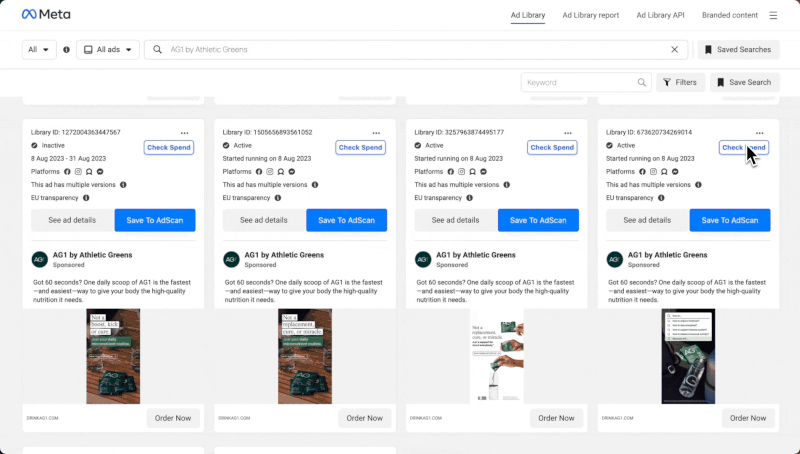
I usually use a combination of the above-mentioned free tools and Sensor Tower—a quite good combination! See the top creatives from the last 30 days; they give you super interesting insights. Or just check out one of our podcasts. I do it for you each month!
This refers to compiling and editing your video with in-app features (i.e. leveraging filters, sound effects, text layers, etc.)
My prediction for 2025: Creative quantity will win over quality. It’s going to be a volume play!
Captions have proven to be one of the most useful additions to videos, as they help provide supporting details or context while ensuring a correct understanding of the audio.
Adding captions can positively boost performance in terms of view time, brand affinity, likability, recall, and uniqueness.
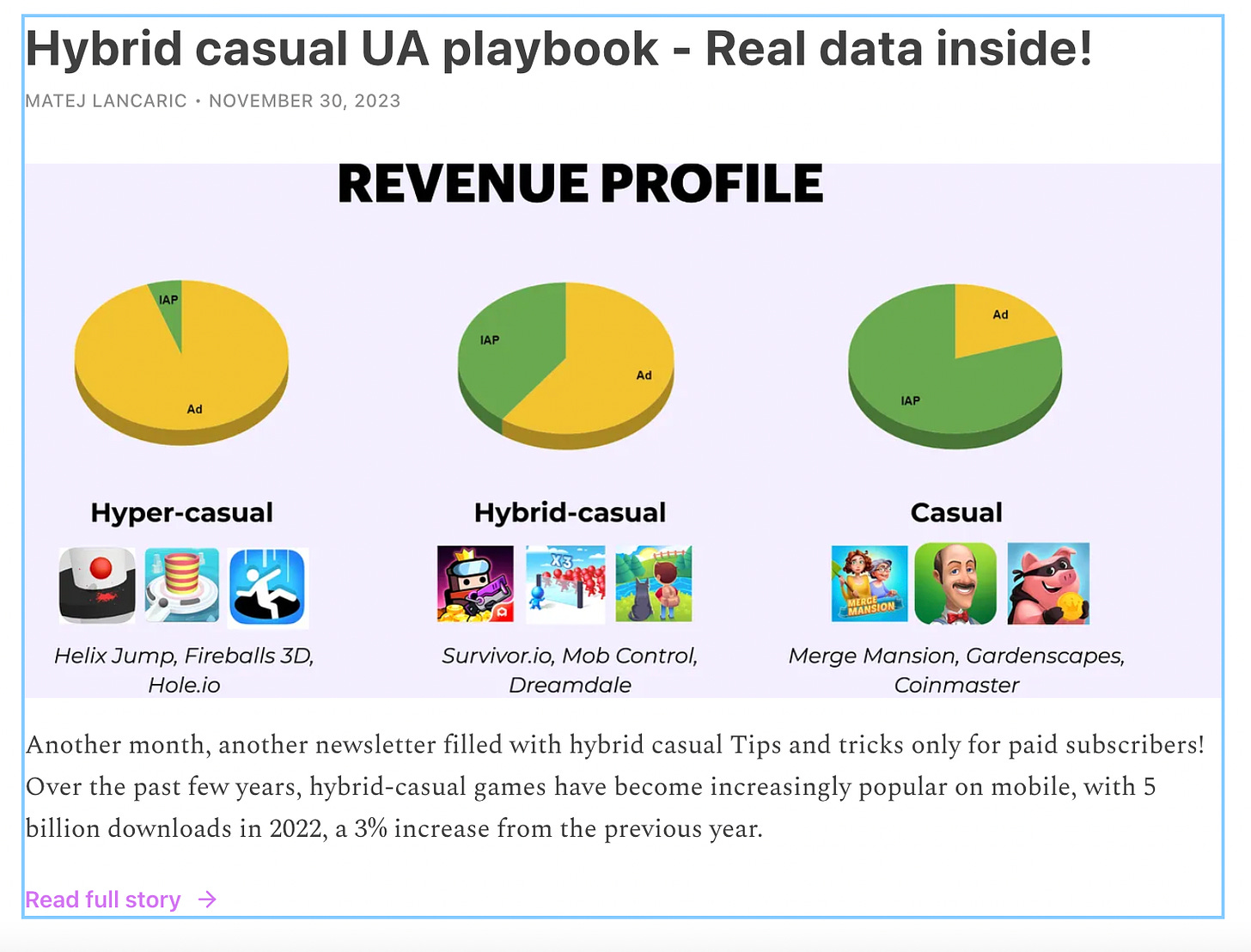
Text overlay is another prominent way to emphasize key messages. Text boxes are used in 86% of all ads.
This can be a highly effective way to visually engage and spark interest in potential customers, as it results in a significant 64% increase in conversion rate. I also found out, that text overlay in the thumbnail makes a big difference in organic uplift and additional views too”!

Animation-style stickers make your creative ads more attractive and dynamic. These eye-catching add-ons can help you attract audiences and encourage them to keep watching your ads.
They can also help you emphasize key information that you want your audiences to remember, such as selling points.
Use whatever makes 0 sense and catches attention.*
* This tip is brought to you by a dancing unicorn
two & a half gamers bringing you the latest creative trends every month. Check our YouTube playlist here.
But there was a different trend I had in mind that I have been seeing for some time.
This was exactly it! This “wall of text” trend is all over the app business. Here is an excerpt from the guide I posted recently:
Let’s fire up canva.com and start working on the real video (it’s still Saturday, and I don’t want to bother anyone else; I am around 15 minutes into this creative production!).
My daughter takes a short lunch nap, so I have about 45 more minutes until she wakes up.
I have a few static images that performed well on Facebook; I have this grim reaper video from Adobe Stock. I will need a Halloween spooky sound, but that’s easy peasy with Envato.
Here we go:
Perfect! Adding a nice vibe.
As I said, I played around with some static images and videos. I created five different variations and added all of them to the Facebook user Acquisition campaign mix.
Frustrated by rising CPIs, I decided to take action. While I have 10 talented motion designers on my creative team, I wanted to experiment in this AI era. I love trying new things and still enjoy getting my hands dirty on the UA side, so why not dive into the creative side, too?
Started testing a new batch of UGC videos right away.
Used these tools:
Made 15 videos in total (9 AI UGC), finished before my daughter woke up.
TOTAL TIME: 54 minutes
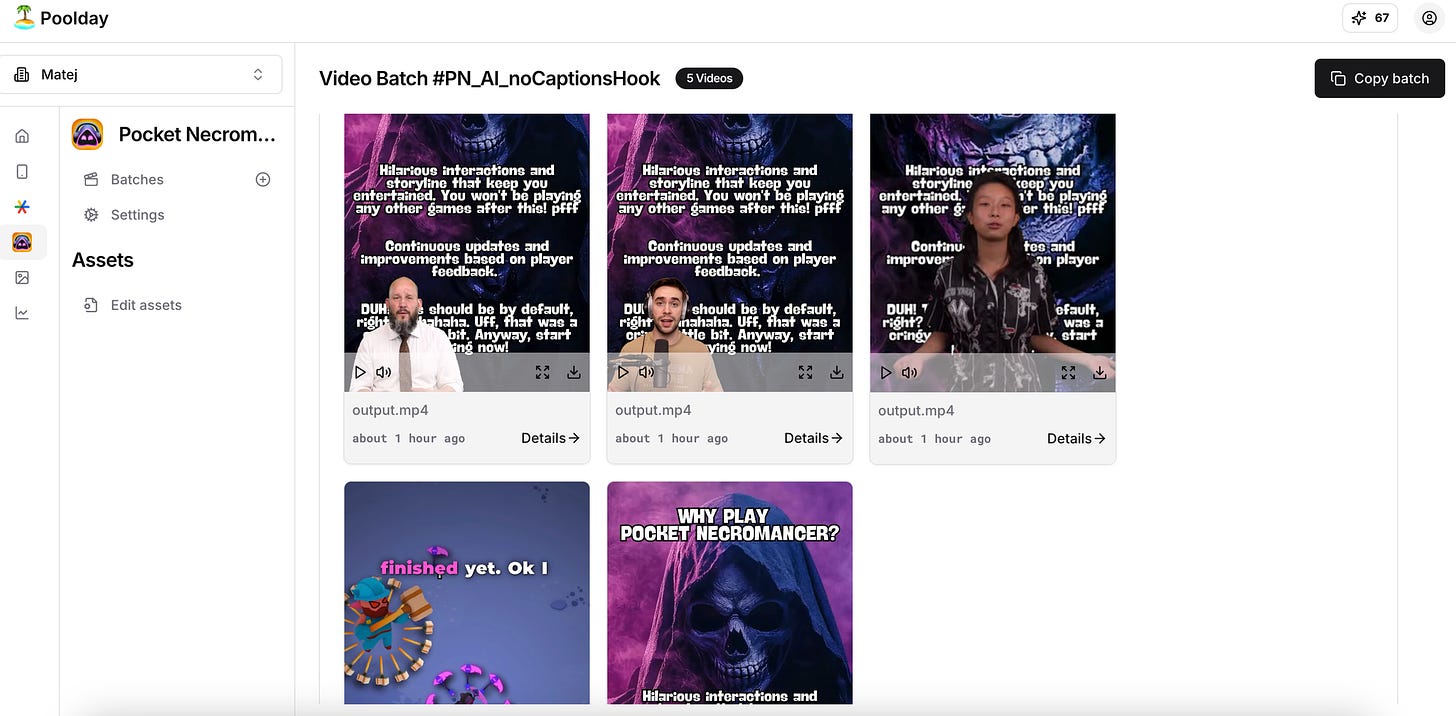
Because why not add more work on my shoulders? I started a new segment about creatives. True detective-like exploration of creative trends and historical influences with Cornelius. Delving deep into the world of creatives to uncover hidden patterns and inspirations. It’s been a hell of a ride. I learned a lot. Here is a quick peak (pun intended)
𝐖𝐡𝐨 𝐝𝐢𝐝 𝐢𝐭 𝐟𝐢𝐫𝐬𝐭? Today, we’re diving into a particularly intriguing case: two games with virtually identical creatives—Triple Match 3D vs. Match Factory 👇
Getting inspired by other games is a key part of creative production. Yet, there’s often a fine line between drawing inspiration and outright copying. Why reinvent the wheel, right?
But here’s the twist: Triple Match 3D (Miniclip) vs Match Factory (Peak) are strikingly similar, both in concept and execution. So, what’s really happening here? Is one company drawing “heavy inspiration” from the other, or is this a case of parallel evolution in game design and creative strategy?
The big question remains: Who launched this creative first? 👀
Check my LinkedIn profile every Friday to get the latest investigation.
The TikTok Creative Challenge is a performance-driven advertising feature where brands collaborate with creators to promote products or services through unique, engaging content—unlocking TikTok. Seems like a big challenge. Oh wait, have you said challenge? Do you mean TikTok Creative Challenge (TTCC)? Badumtss! Jokes aside. You are missing out heavily if you are not running TTCC videos.
TikTok is transforming how people discover new ideas and products while creating a new way for games to engage with creators to reach and connect with diverse communities around TikTok.
TikTok Creative Challenge is a new in-app feature that allows creators to submit video ads to brand challenges and receive rewards based on video performance. Creators can browse through the list of challenges, read the challenge’s brief, which displays the reward pool and details rules and requirements, and submit their video ad.
The Creative Challenge gives creators full creative freedom over their ads, unlocking more opportunities for them to collaborate with brands in a way that is most authentic to them.
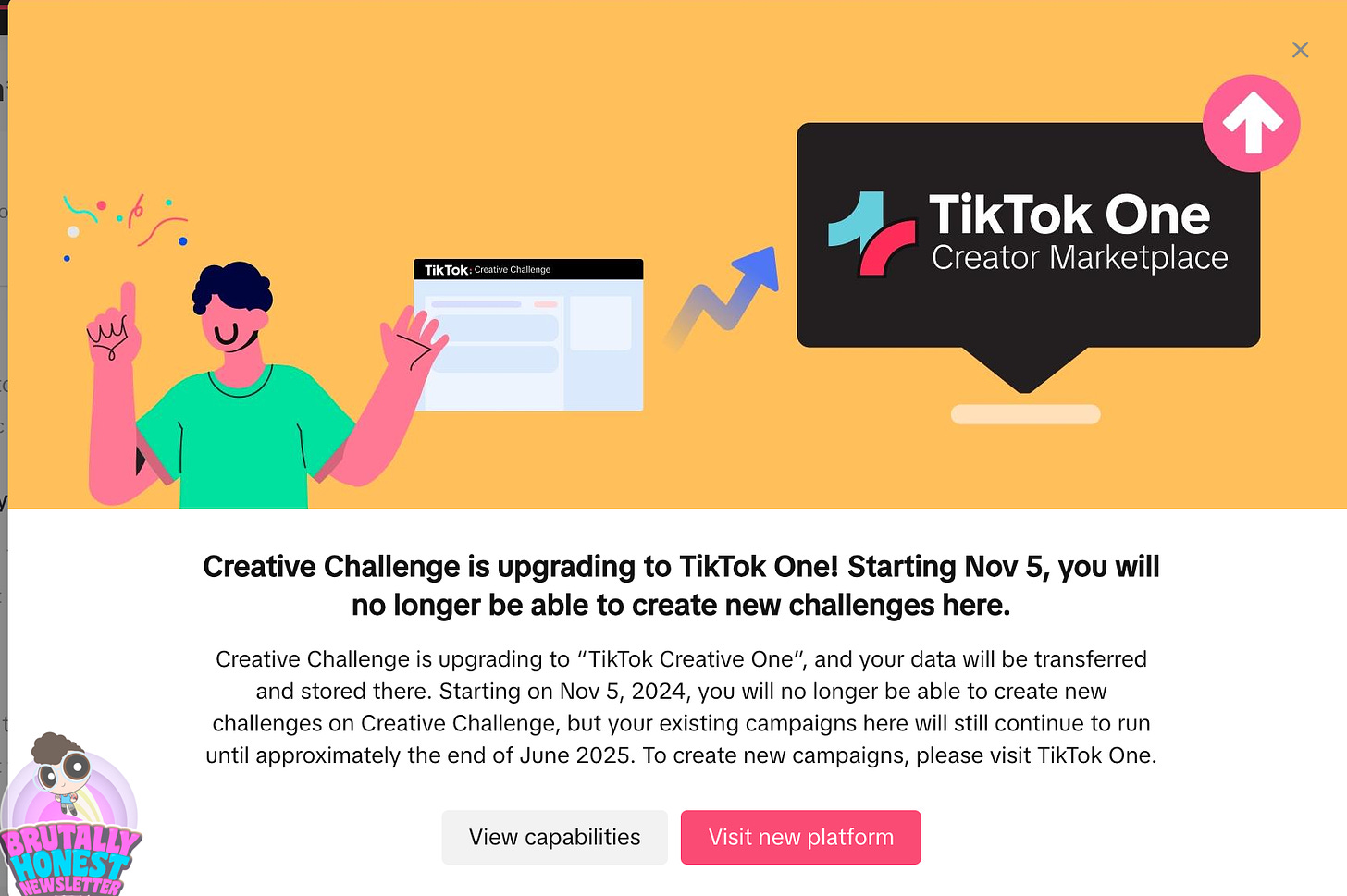
Easy! Sit down and visit TikTok One – Creator Marketplace. Then, prepare a creative brief for creators. Don’t forget—the brief is the key to receiving quality videos! More about that later.
I must say, I saw some pretty weird shit in the TTCC for many games. But there is also gold in there. Your performance (and scale) improves heavily when you find that gold! Here is a guide on how to find that gold:
I was always a big fan of leaving the brief really broad and letting creators do the creative job. (I am also way more creative when I have my freedom) but there are always boundaries/more info that you should add to your TTCC briefs:

This makes you really think about your audience – who, what, when, and why they play?
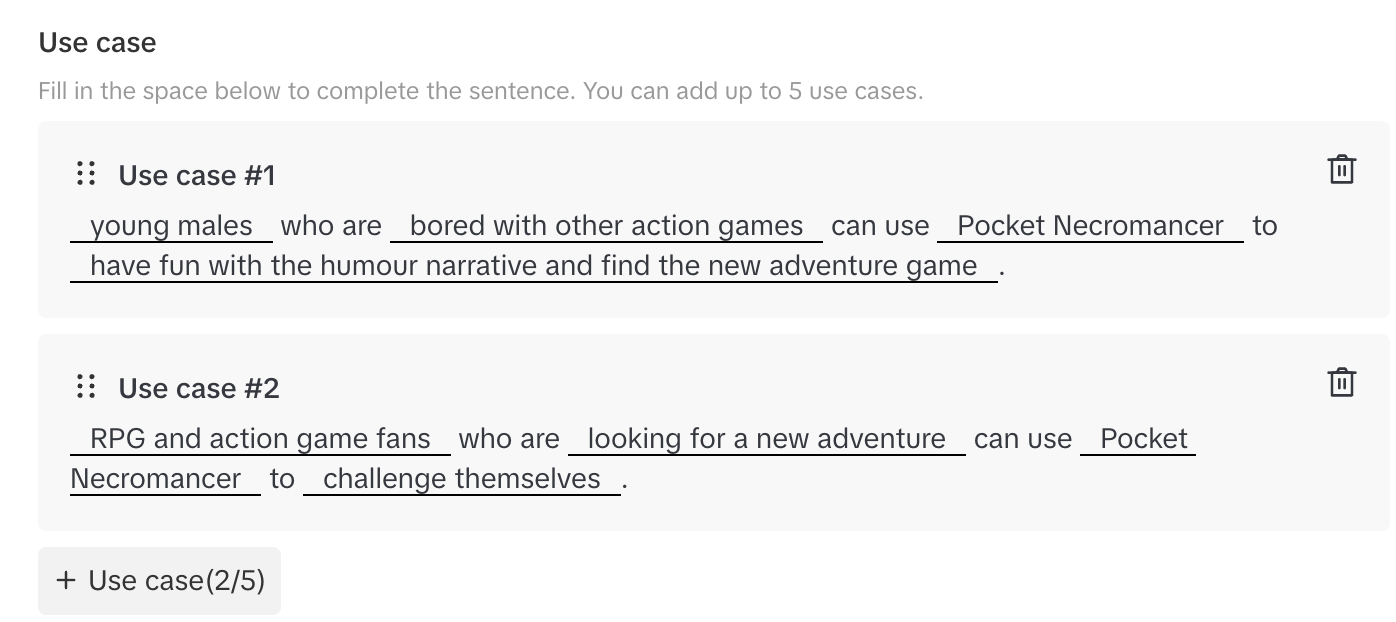
Still kind of broad, but way more specific than nothing. You should try. Remember my tip regarding audiences on Google Ads? Same thing. Now, think more about restrictions:
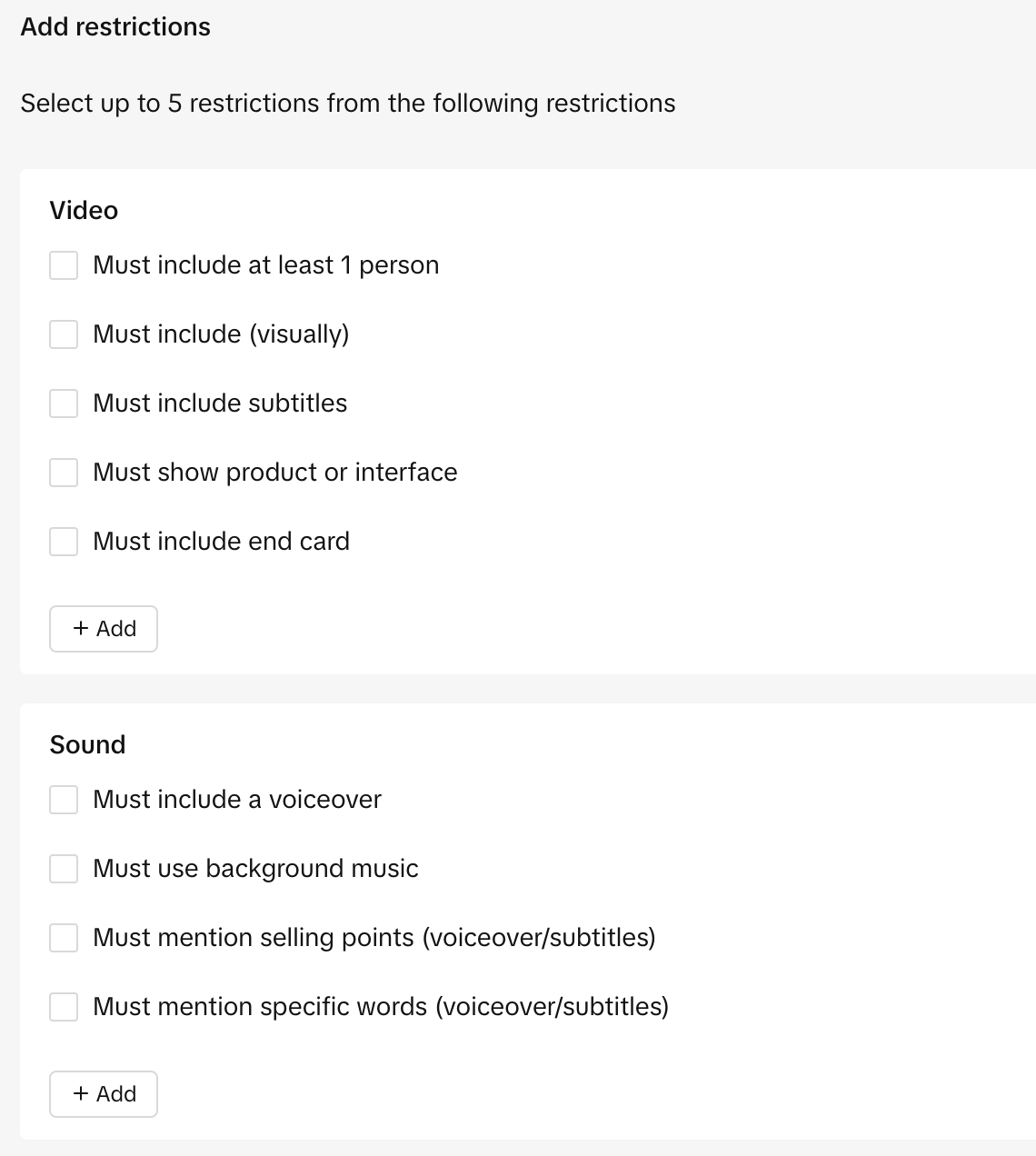
Creative freedom with some boundaries:
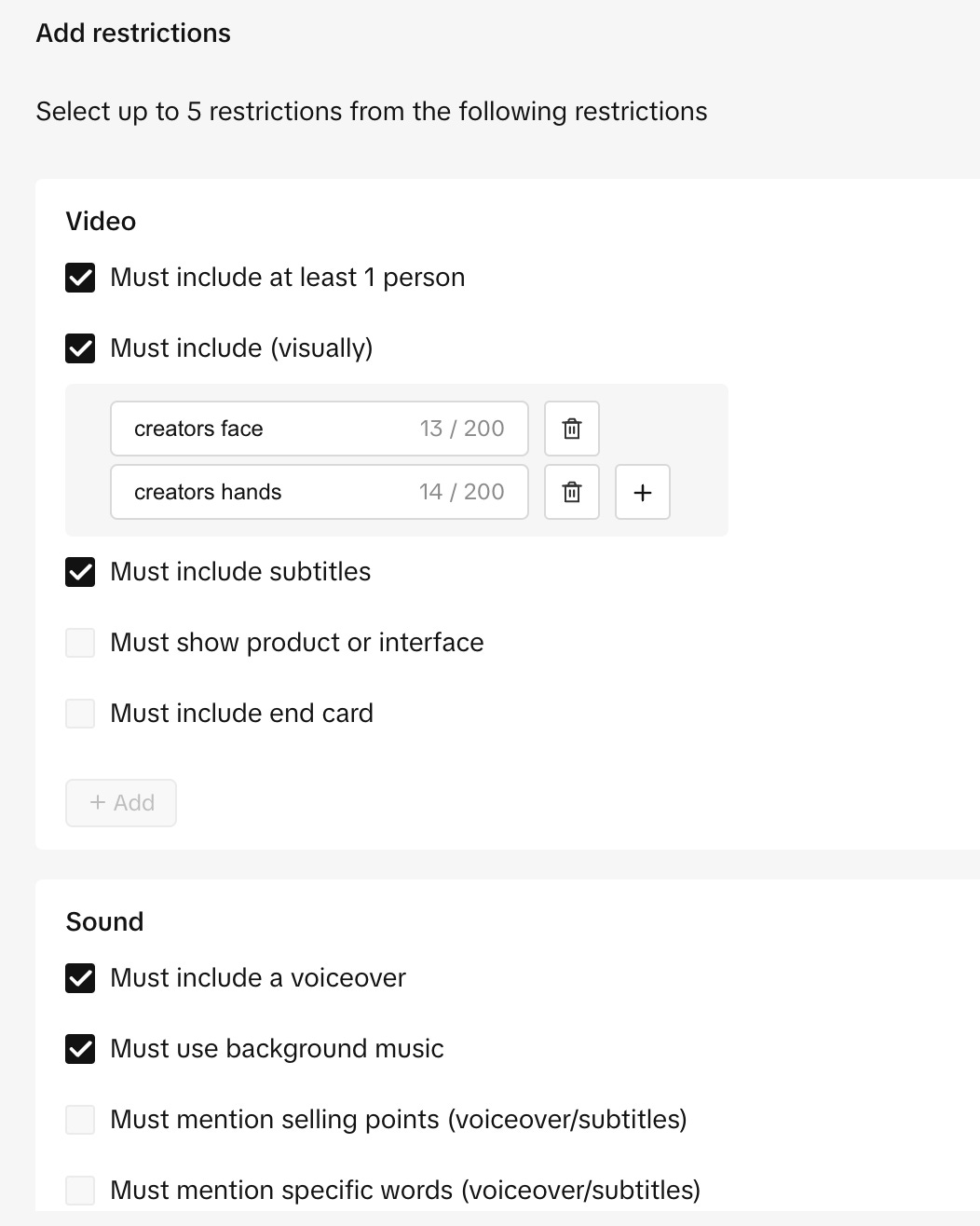
This will improve your TikTok Creative Challenge outcomes immediately. Then you can play around with it and go wild!
Use the TikTok Creative Challenge as a source of inspiration! Transform the best-performing ads into ads that you can also use on other channels.
TTCC creators are using your own assets, so you can just replace them with AI people and recreate the same creative angle that works well on TikTok.
My go-to AI tool for this purpose is Synthesia. Works like a charm! With the recent rise of AI, this is even more relevant than ever!
Let’s dive straight into the UA Playbook, which covers the UA channel mix, AKA Diversification, spying competitors, creative trends as a form of diversification, and channel best practices that unlock growth for you.
Which UA channels are best for your game, and what should the campaign structure look like? Well, everything depends on your budget. With a smaller scale, you can start with Facebook. You don’t need an MMP. Facebook SDK is sufficient. Facebook provides the best targeting options, and you can still get a lot of data from this network.
Diversification of your UA channel mix is crucial—we know that.
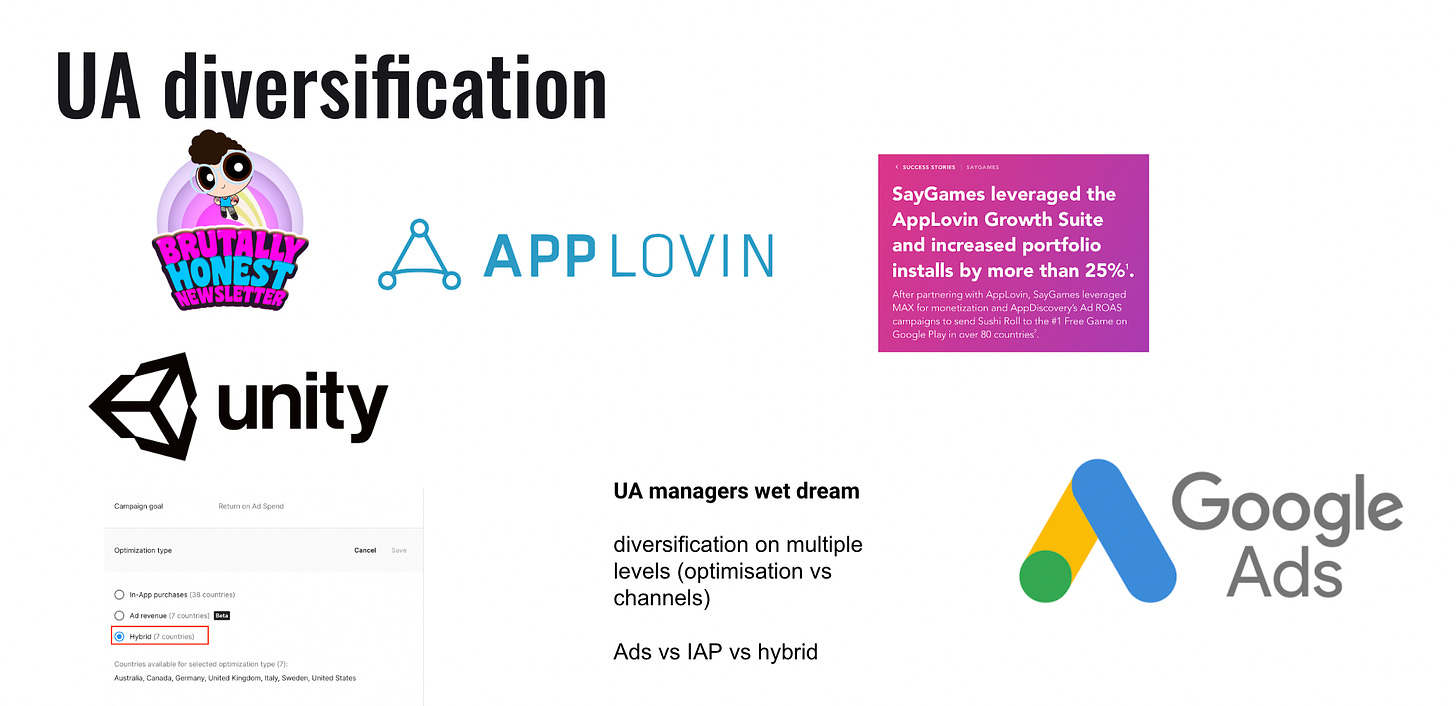
Diversification doesn’t always mean you have to run a million UA channels at once. It really starts with one channel. What am I talking about? What to diversify:
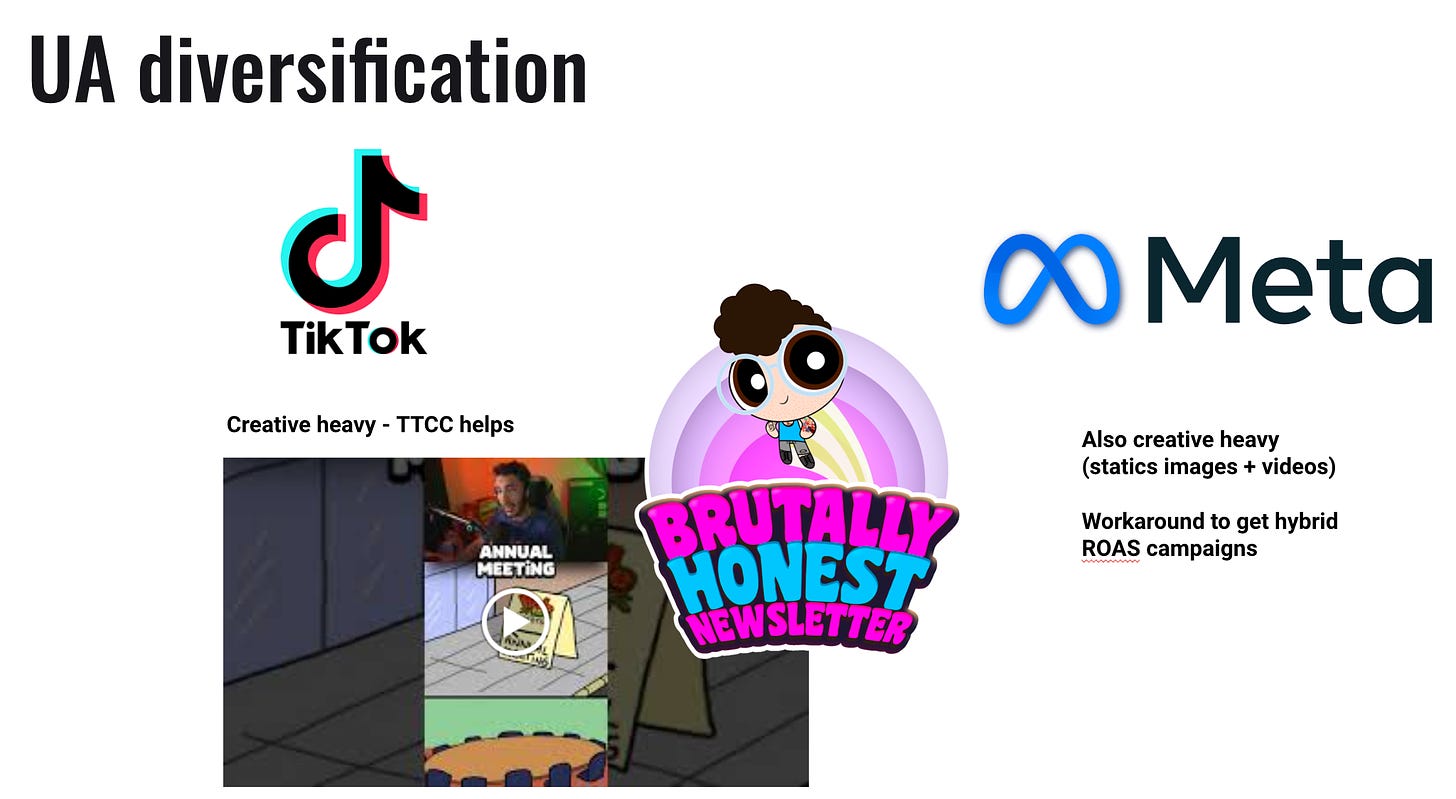
FB, Google, TikTok, Applovin, and Moloco are the main channels. No doubt!
While none of these channels in the picture below are NEW, I see them climbing up the UA channel ranks in the games I manage or the games we review on our no-BS podcast.

Wait, there is more:
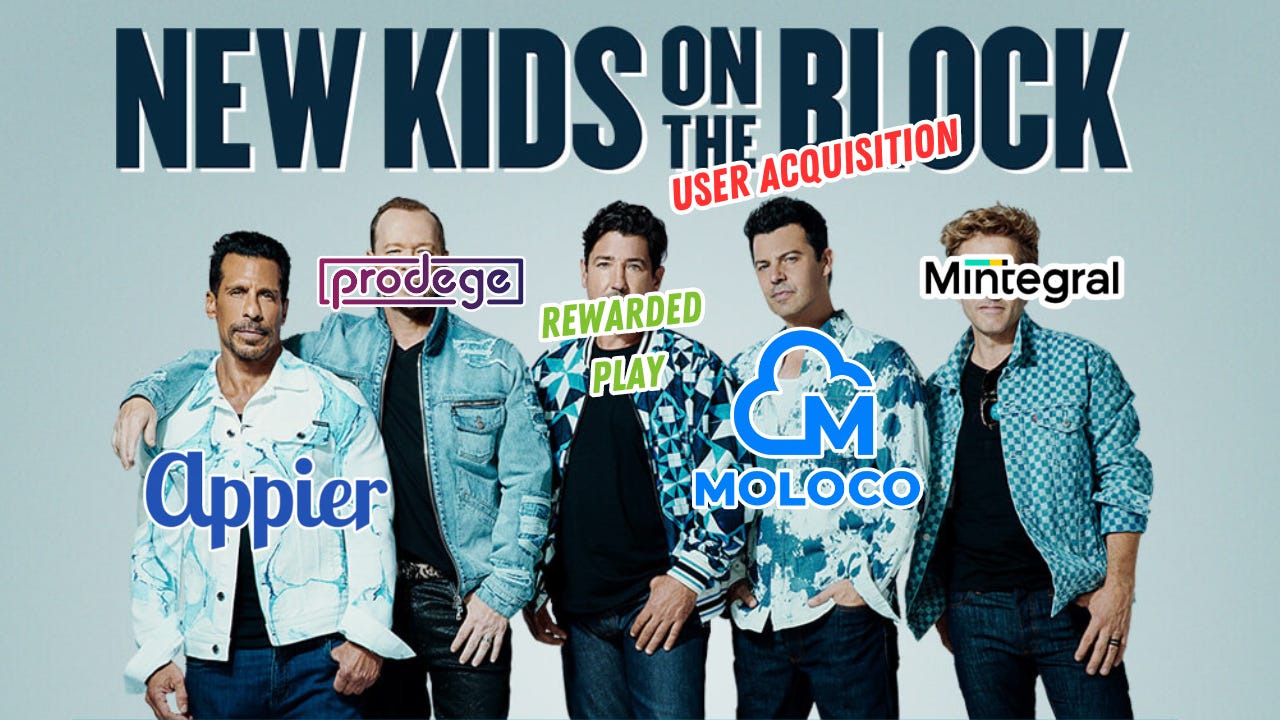
Now, it gets pretty complicated. The number of rewarded-play UA channels is on the rise, so I would say the hype is real.
It started with Misplay a while back:
Mistplay is a loyalty program for gamers, allowing users to earn rewards by playing games. Here’s how it works:
I talked multiple times about diversification; this is the most recent talk. Request here!
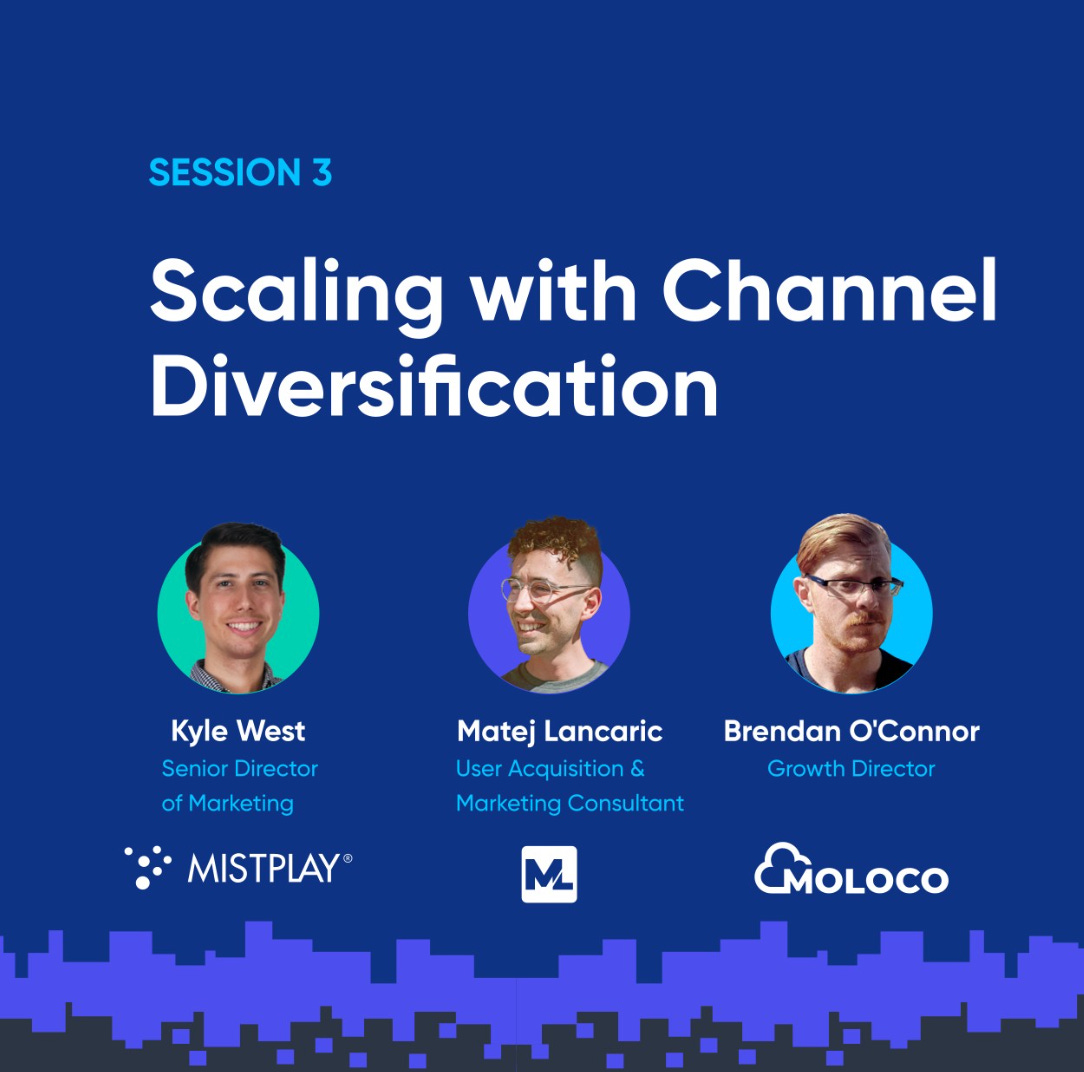
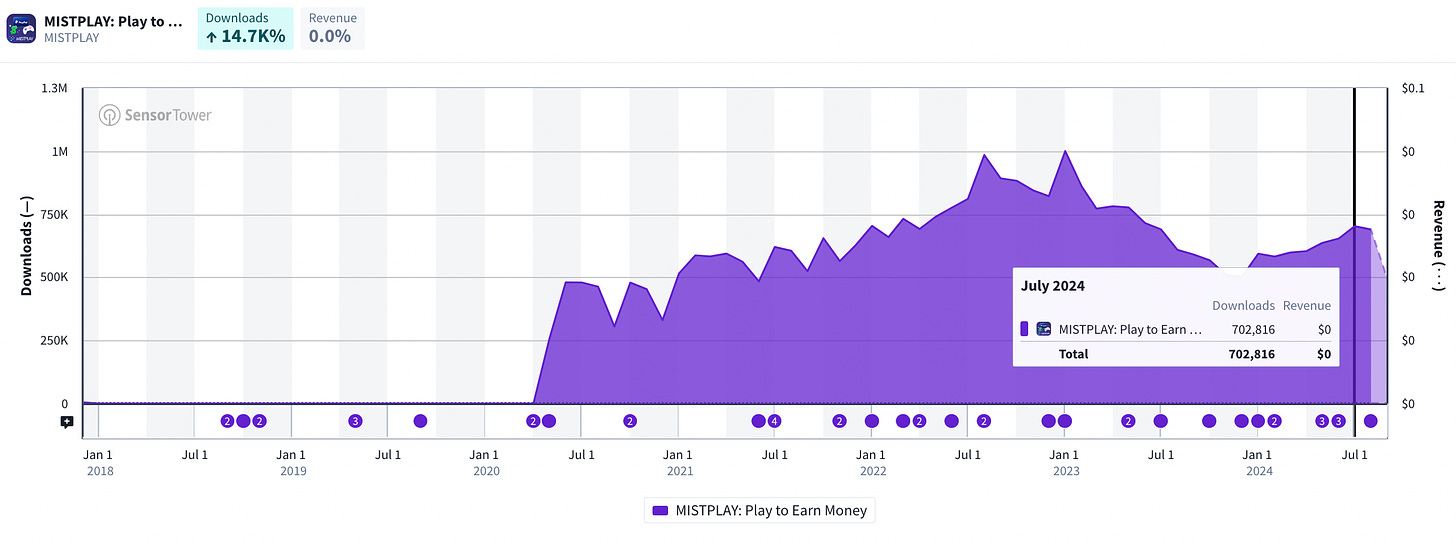
After a pretty successful year 2023 for Mistplay, people started founding companies and moving in the same direction. Now we have a shit ton of them. Good or bad?

The whole database is put together by a true hero, Paul Bowen. Give him a follow!
Here is the Rewarded-play UA channel series, but you should definitely check these:
 More Rewarding
More Rewarding More Rewarding
More Rewarding More Rewarding
More Rewarding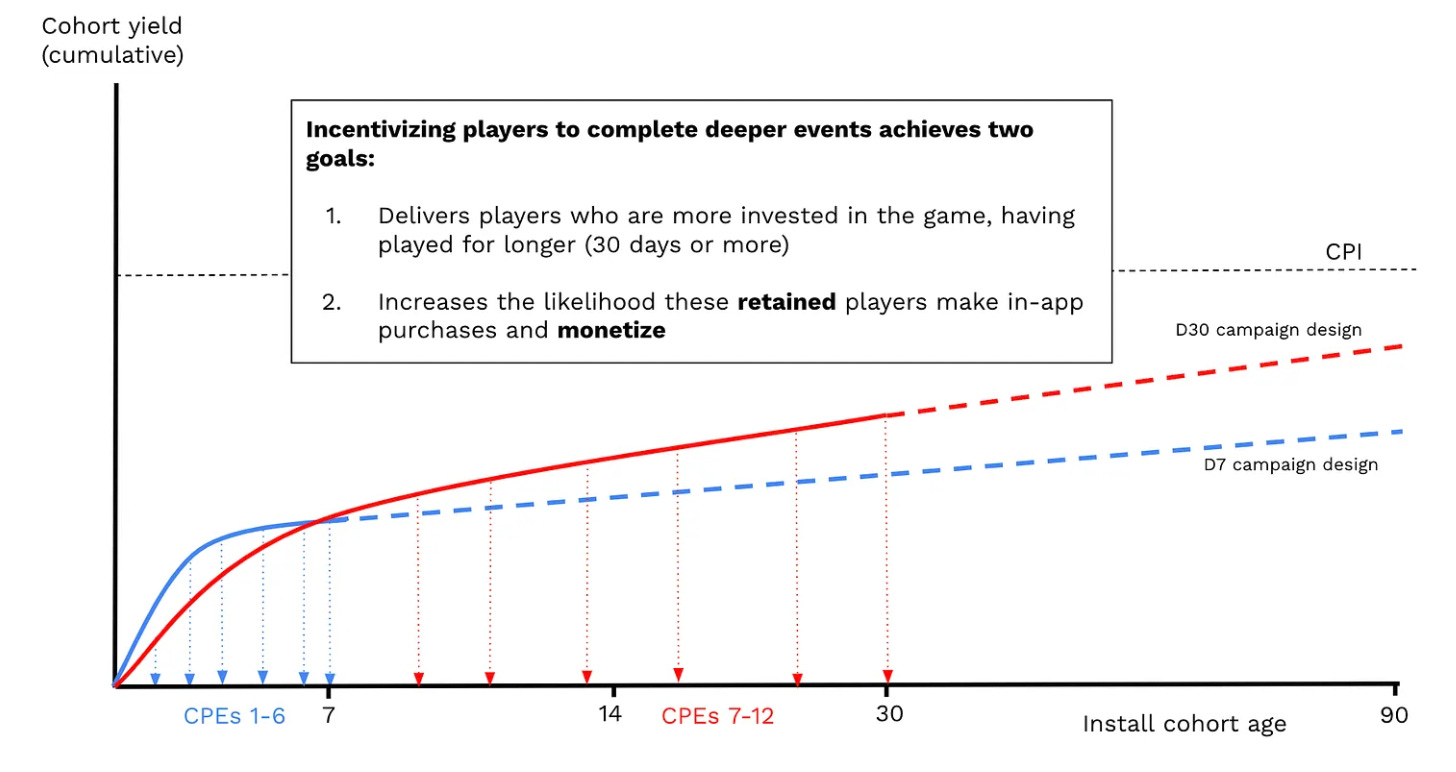
This picture says everything. Choosing inappropriate Cost Per Engagement (CPE) events is a common reason marketing campaigns fail. If an event is too easy, it may not attract high-quality users (AKA shitty players) who are genuinely interested in the game, leading to low retention rates and poor long-term engagement.
Conversely, overly challenging or irrelevant events can result in high drop-off rates. Users abandon the effort when tasks seem unattainable or misaligned with their interests.
Discover how channel diversification is reshaping the future of gaming marketing and learn actionable strategies to scale in 2025.
Effective communication isn’t just a skill—it’s the glue that holds User Acquisition (UA), creative, and product teams together. It drives understanding, builds trust, and fosters collaboration, all of which are critical for achieving goals and making progress. Yet, sometimes, we simply forget to communicate, even when it can make all the difference.
Here’s why and how communication impacts UA success:
Be Clear and Concise
Listen Actively
Be Honest and Transparent
Show Empathy
Choose the Right Medium
Celebrate and Critique Thoughtfully
I should and will overcommunicate shit. Its better than silence. For everybody!
As a Senior UA Manager, communication is one of the most critical skills you can develop. It’s not just about relaying information; it’s about creating a culture of collaboration, understanding, and trust.
And remember—no one’s perfect. Me neither. Even the best communicators can improve. So, let’s all strive to communicate better together.
Playable ads add variety to your UA campaigns. It’s an absolute must for UA outside of Facebook, Google, and Tiktok. Basically, all SDK networks! With so much access to creative tools to produce them, it’s a no-brainer to add them to your creative mix for testing. Here are a few more reasons why you should play around with them:
They’re super engaging, especially when compared directly to static or video ads. Playable ads drive 27x higher conversion rates than banner ads. In comparison, video drives 23x. More engaging means more memorable and almost impossible to ignore.
They’re cost-friendly to run. On Android and some ad networks, playables are one of the cheapest to run on ($0.60) and run at less than half the cost of native ads ($1.22). According to Liftoff.
You can work with good data. I’ll cover this more later, but you can test things like if letting users win will drive more conversions or measure how quickly users engage with your ad. These customizations can help you fine-tune
There are five simple parts to a playable ad.
Here are a few examples of what playable ads look like:
Source: https://www.is.com/community/blog/the-what-how-and-why-of-playable-ads/
Playables are not only for gaming. Shopping, fitness, finance, and travel apps use them too. Temu has a minigame where users play a match game to unlock a discount. Dating apps will let you create a profile. Or fitness app can let you select your workout goals. It’s becoming more widely adopted across all app categories, but we’ll try to stick to gaming in this guide.
There are two versions of playable ads:
Although the video format is easier to produce and may be lighter, the HTML5 version is often more visually appealing and accurate to the product.
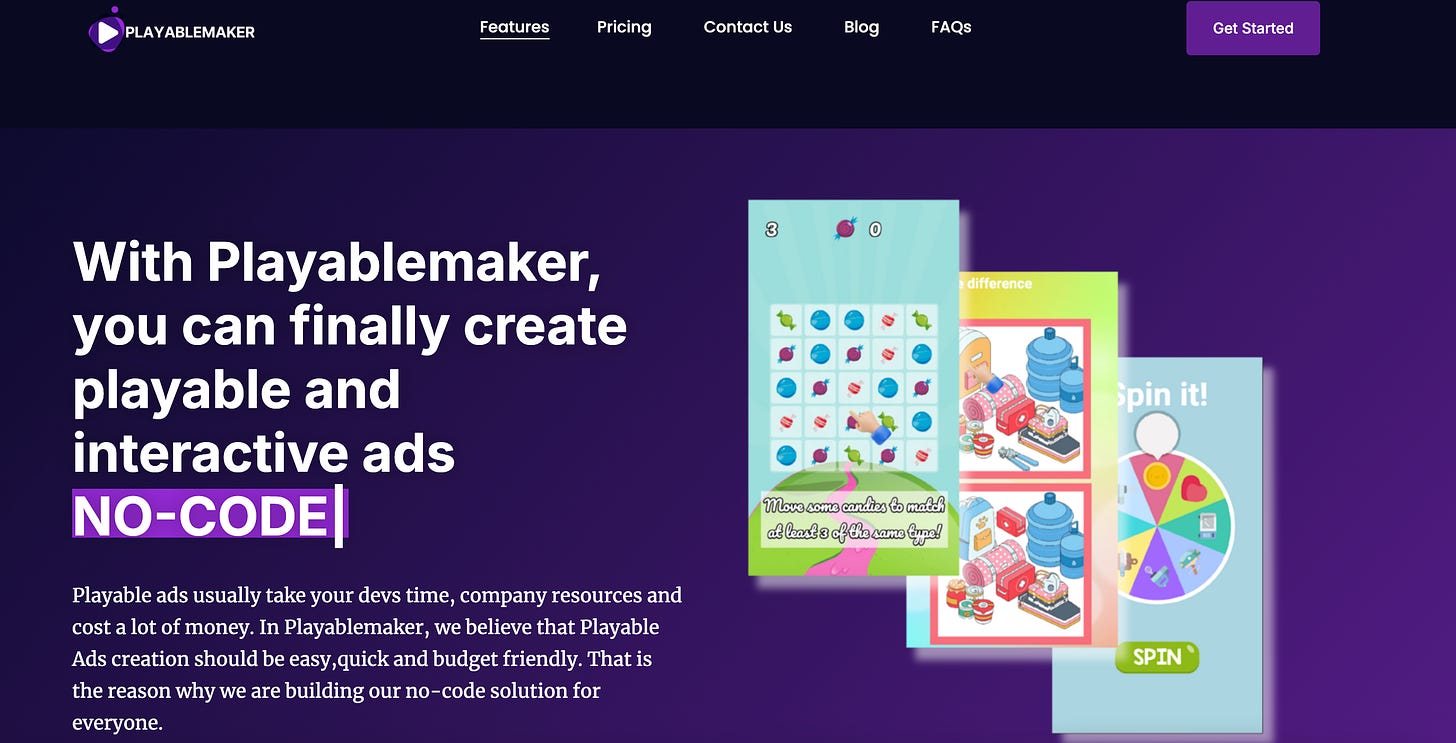
Yes, some of you might know this. Playablemaker is a tool we develop. I would appreciate it if you booked a demo, tried the tool, and shared feedback. If you use promo code DANCING UNICORN, you might get a discount.
PlayableMaker.com and our ad network comparison clearly show that UA managers are interested in building for all of them when they can do so.
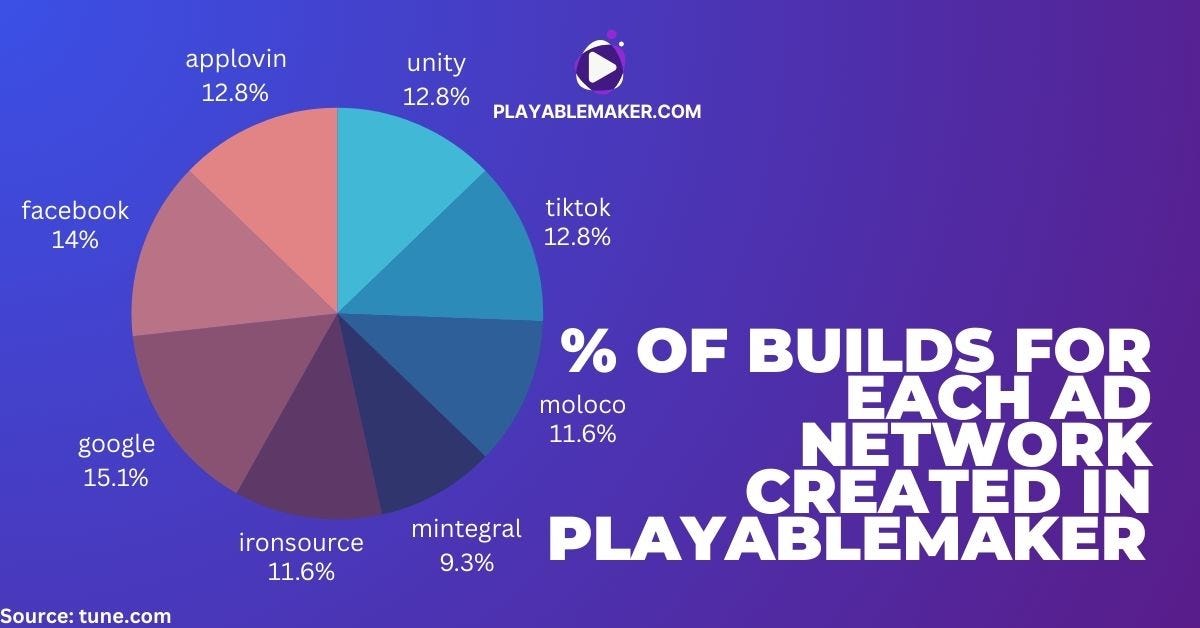
No 💩 BS UA Newsletter: Real Insights for the Post-IDFA World
Funny story—I started this weekly newsletter in March 2022, thinking I’d never have enough time, ideas, or insights to keep it going. Fast forward to today, and wow, what a ride it’s been!
And now? 2024: We’re sitting at 15,785 subscribers—nearly double last year’s count. THANK YOU so much for the support and for sticking with me through this journey.

I’m committed to bringing you no-fluff, actionable insights about UA, especially as we navigate the challenges of the post-IDFA world. Here’s to more learning, sharing, and growth in the year ahead.
What topics or insights do you want to see more of in 2025? Drop me a reply—I’d love to hear your thoughts!
If you haven’t done it yet, please subscribe to my newsletter. It’s so honest it might actually annoy you. If you are easily annoyed, please don’t subscribe.
I also just started a paid subscription where I share insights, special UA tips, and creative hacks monthly. Check it out here!
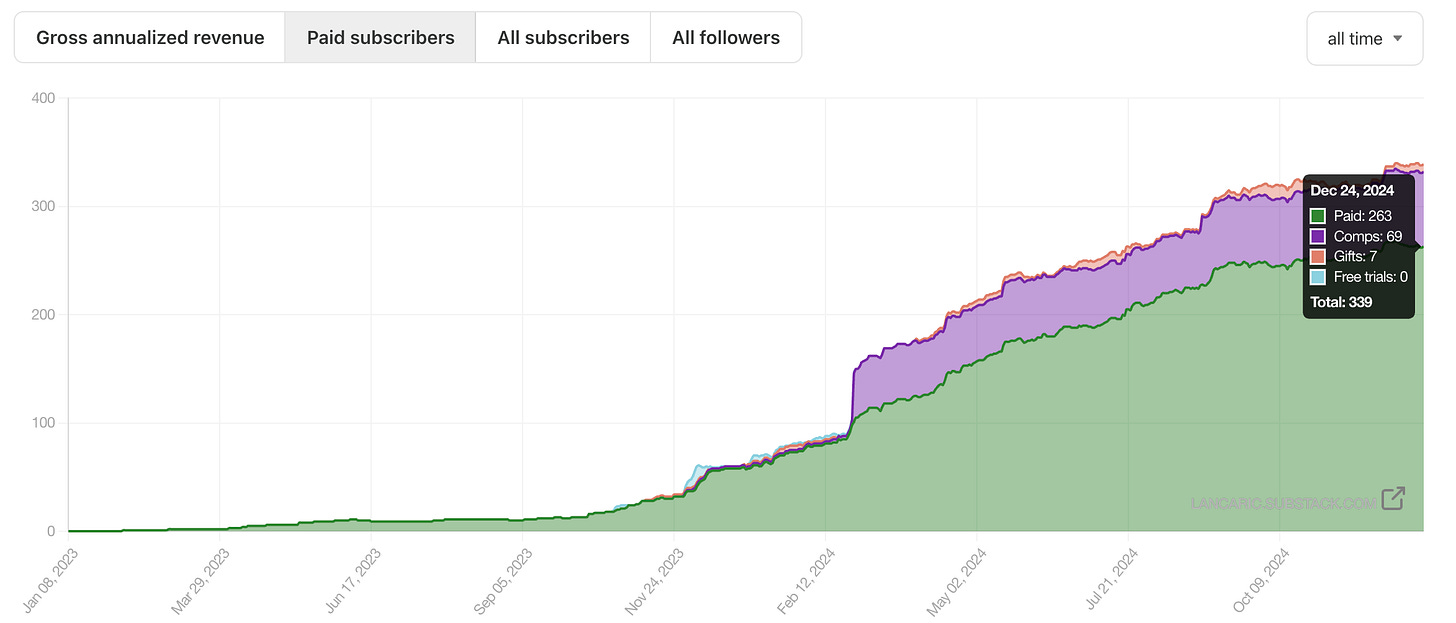
Wow. What a year! This little baby has grown beyond anything we ever imagined. Oh my freaking god! The feedback has been incredible, and it’s all thanks to YOU. Your support pushes us to keep delivering no-BS, high-quality, and (let’s face it) super fun content.
Here’s the growth story:
We’re thrilled, humbled, and excited to keep growing. If you haven’t subscribed yet, please do—it means the world to us and keeps the momentum going as we pour our hearts into this podcast.
BIG Thank you for being part of the journey. Here’s to an even bigger and better 2025!
Here is also our best episode, which got a wild viral effect – 18k views:
How Did We Really Do It? The Podcast Growth Playbook by Matej Lancaric
Let’s be real—our growth wasn’t just luck. There’s a method to the madness, and it’s all part of what I like to call the Podcast Marketing Playbook, aka riding the hype wave.
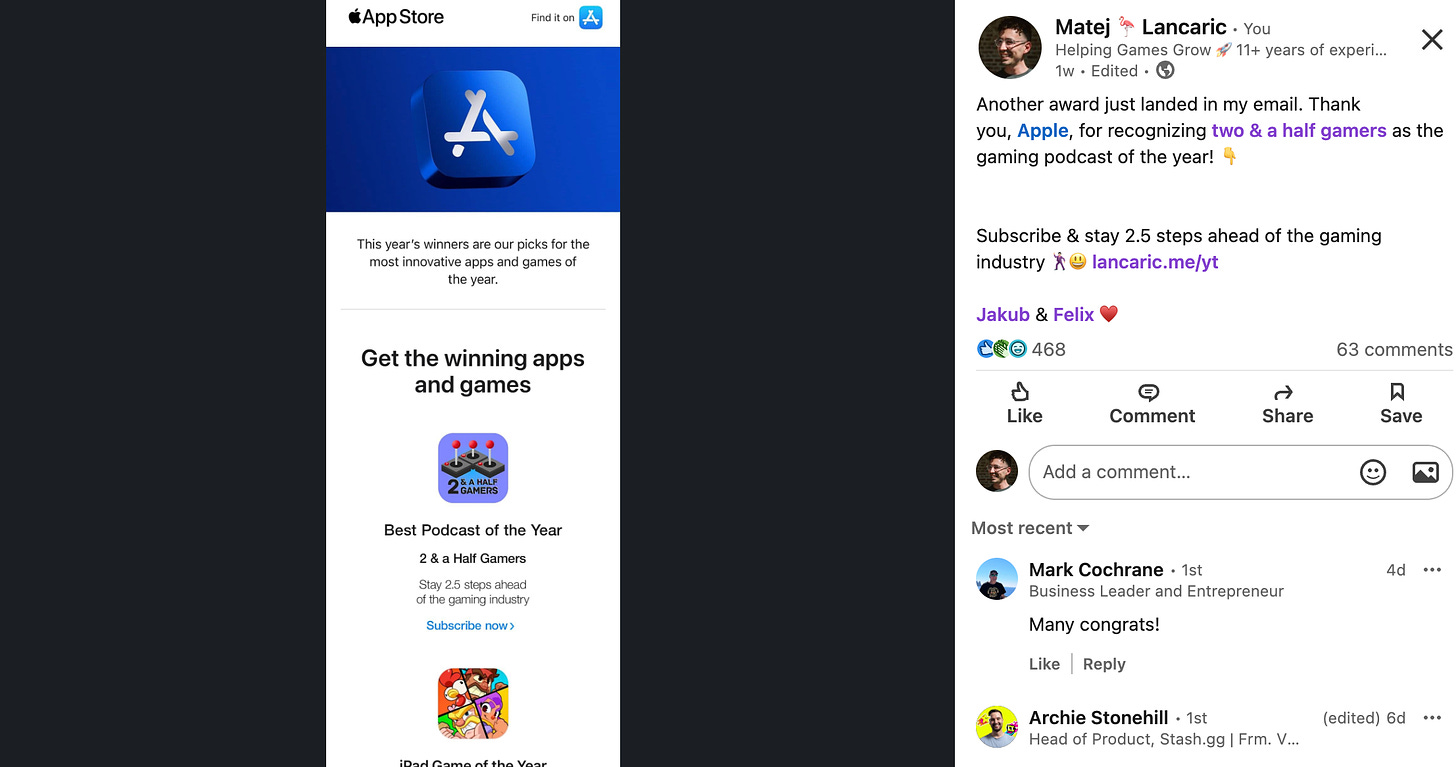
Here’s the deal:
This approach worked. The controversy and relatability kept us top of mind, made people talk, and built a loyal audience who understood the vibe.
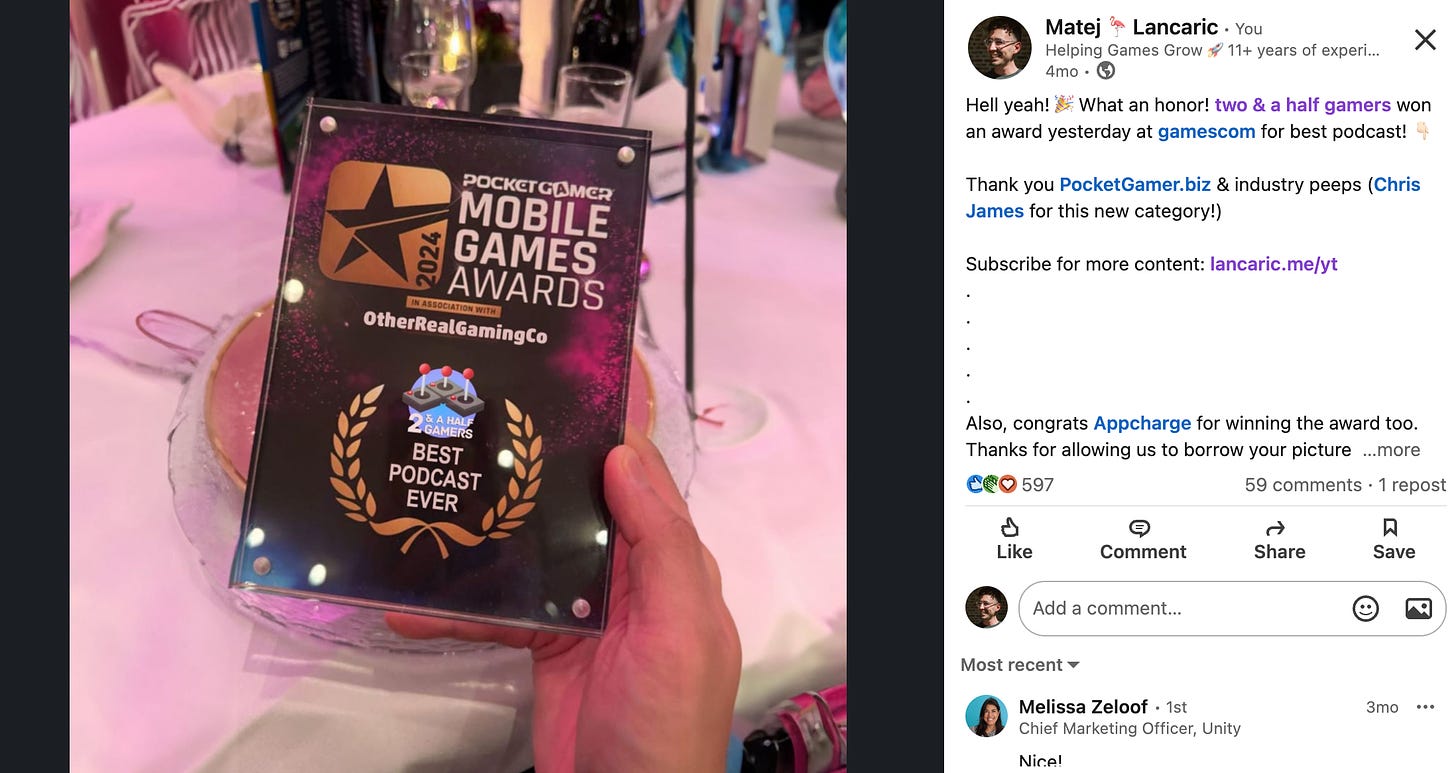
So, if you want to grow, here’s the real playbook:
We’ll keep bringing the same no-BS, hype-driven energy that got us here, and we’re glad you’re along for the ride. Buckle up—it’s gonna get even wilder in 2025! We are cooking something insane.
Building an inclusive community space in the gaming industry can significantly enhance collaboration and innovation. It creates an environment where diverse voices and perspectives are valued.
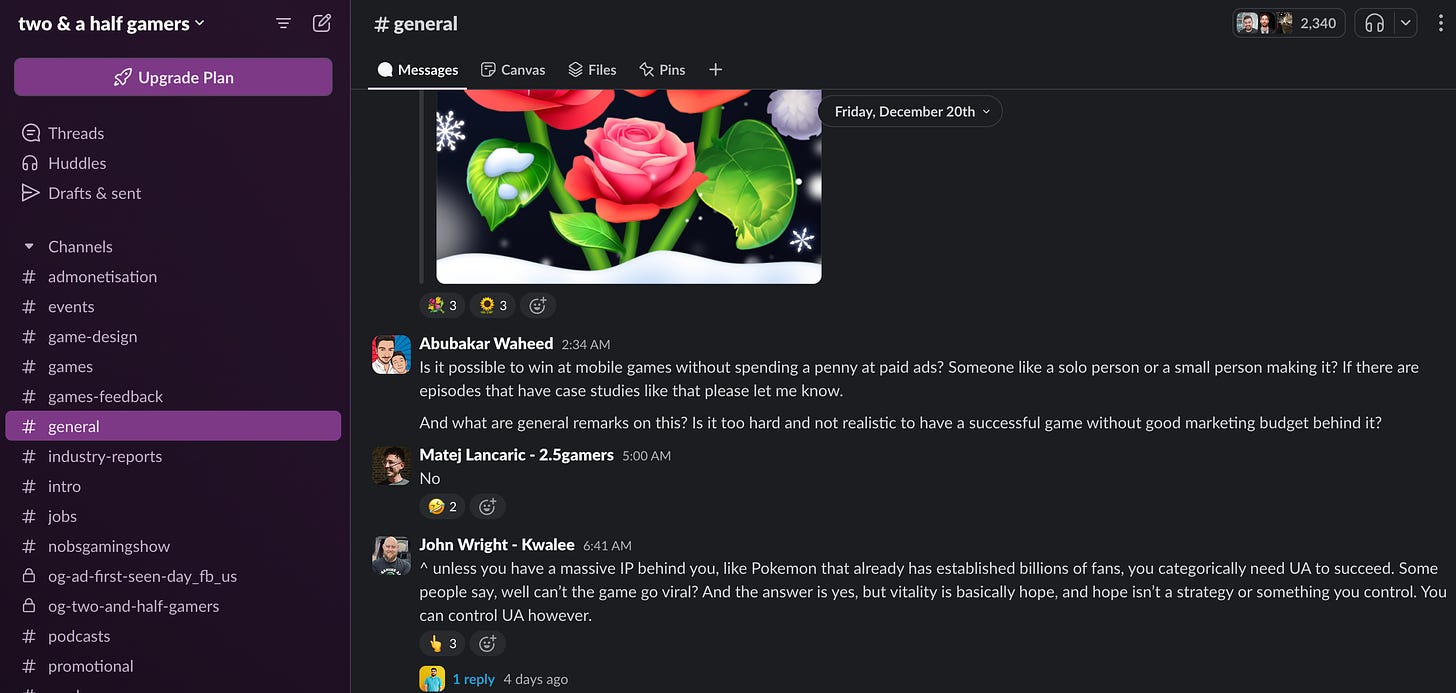
Yes, we actually did this too. We opened up a community space for everybody. Juniors, seniors, developers, marketers, salespeople, vendors. The most inclusive community in gaming! Join us here.
The year 2024 was tough. Really tough. And guess what? I don’t think 2025 will be any easier. If anything, it’s going to test us even more. But here’s the thing—I don’t complain, and neither should you. The key is to enjoy the ride as much as possible and not take life too seriously.
Magic happens when you’re forced out of your comfort zone. This year, like so many others, challenged me in ways I didn’t expect. I learned a lot—about myself, my priorities, and what I’m truly capable of. That’s the beauty of this roller coaster ride we call life, especially in the world of consulting and user acquisition (UA).
A UA manager’s job is simple on the surface: make gaming companies a lot of money by driving installs. But in practice? It’s a whirlwind:
Here’s the kicker: most people have no idea what the fuck they’re doing. And that’s okay! The industry changes so fast that nobody’s an expert for long. What worked yesterday probably won’t work today.
If you’re a UA manager or thinking about becoming one, here’s what you’re signing up for:
And that’s just scratching the surface.
The mobile industry isn’t going anywhere. Apps and games are everywhere, which means opportunities abound. But if you want to thrive, you need to be a true unicorn—someone who’s both deeply knowledgeable and hands-on in the industry.
Life’s hard, but it’s also incredible. The challenges, the chaos, the wins—they’re all part of the ride. Enjoy every moment, even the tough ones. Learn, adapt, and most importantly, don’t forget to laugh along the way. That is why I wrote about the reality of a UA manager.
We are going to tackle 2025 with grit, growth, and a hell of a lot of fun!
Opening up about my solopreneur journey, complete with all the numbers and thoughts about life, was hands down one of the hardest things I’ve ever done. Putting it all out there—successes, struggles, and everything in between—felt vulnerable but also incredibly refreshing.
What I didn’t expect? The overwhelming feedback. Hearing how my story inspired so many people from different walks of life made it all worthwhile.
This journey isn’t just about business; it’s about growth, resilience, and figuring out what truly matters. And if sharing my experiences can help someone else along their path, it’s absolutely worth it.
To everyone who’s been a part of this ride—thank you—more learning, more sharing, and building something meaningful together.
Humor & personal engagement are powerful tools for boosting newsletter subscriptions and encouraging sharing. Here’s how they can enhance the success of your campaigns:
Oh wow! You made it here! You must be very engaged. I like that type of players… Ehm, people!
Please share this article with your industry friends. It would mean the world to me.
Also, subscribe to my newsletter. It’s so honest it might actually annoy you. If you are easily annoyed, please don’t subscribe. Subscribe now to podcast.
About the author call_made
A true mobile marketing enthusiast currently working as a UA consultant.
Please login or subscribe to continue.
No account? Register | Lost password
✖✖
Are you sure you want to cancel your subscription? You will lose your Premium access and stored playlists.
✖